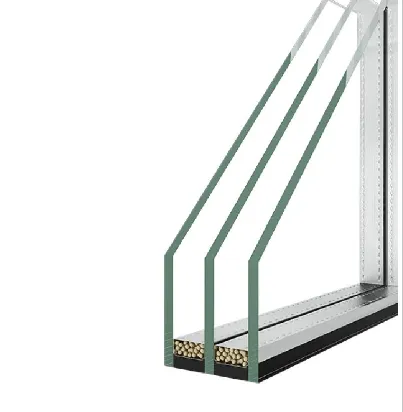

In the dynamic landscape of energy-efficient architecture, low e glass has undergone remarkable advancements, with variants like pyrolytic low e glass, single glazed low e glass, and soft coat low e glass redefining thermal performance. Whether you seek the durability of single pyrolytic low e glass or the efficiency of single low e glass, understanding these technologies is key to optimizing building energy use. Let’s explore how each type addresses specific design needs while shaping the future of sustainable construction.

Pyrolytic low e glass stands out for its robust coating, applied at temperatures exceeding 600°C during the glass manufacturing process. This high - temperature treatment fuses metal oxide layers directly onto the glass surface, creating a hard - coat that resists scratches, chemicals, and wear. Unlike soft - coat alternatives, pyrolytic low e glass can be tempered, cut, or drilled after coating, making it ideal for custom installations. In commercial settings, such as storefronts or office partitions, this glass maintains its low emissivity (ε ~ 0.25) while withstanding frequent cleaning and environmental exposure. For example, a shopping mall in a coastal area might use pyrolytic low e glass in exterior windows, combining saltwater resistance with 30% reduced heat transfer compared to standard glass. The pyrolytic process also allows for integration into single or double glazing, offering flexibility for retrofits and new builds.
Single glazed low e glass brings energy savings to projects where double glazing isn’t feasible, such as historic homes or budget - constrained renovations. This glass features a low - emissivity coating on a single pane, reducing heat loss by up to 40% compared to uncoated single glazing. In regions with mild climates, single glazed low e glass can be a cost - effective solution—for instance, a cottage in Oregon might use it to minimize winter heat loss without the expense of double glazing. The coating options for single glazed glass include both pyrolytic (hard - coat) and sputtered (soft - coat) variants: hard - coat is more durable for exterior use, while soft - coat offers better efficiency but requires careful handling. Though less effective than double glazing, single glazed low e glass still delivers noticeable savings, typically paying for itself in energy costs within 2–3 years for residential users.
Single low e glass simplifies energy - efficient glazing by focusing on core thermal performance without complex layers. This term often refers to single - pane glass with a low e coating, designed for applications where space or budget restricts double glazing. In mobile homes or small cabins, single low e glass can eliminate condensation on windows while reducing heating needs. The coating’s ability to reflect interior heat back into the space makes it particularly useful in cold climates—for example, a ski lodge in Colorado might use single low e glass in dormer windows, maintaining views of the mountains while cutting heat loss by 35%. While not as efficient as double glazing, single low e glass offers a practical middle ground, combining simplicity with measurable energy benefits.
Single pyrolytic low e glass merges the hard - coat durability of pyrolytic technology with the simplicity of single - pane glazing, creating a versatile solution for demanding environments. The high - temperature - fused coating on this glass resists abrasion and chemical damage, making it suitable for high - traffic areas like schools or public buildings. In industrial settings, single pyrolytic low e glass can withstand the harsh cleaning agents used in factories while maintaining its thermal barrier. For a warehouse in a manufacturing district, this glass might be used in skylights, reducing heat gain in summer and heat loss in winter without the need for complex double glazing. The single - pane design also minimizes weight, ideal for structures with load restrictions, while the pyrolytic coating ensures long - term performance without degradation.
Soft coat low e glass represents the pinnacle of low e technology, using vacuum - sputtered coatings with ultra - thin silver layers to achieve exceptional thermal insulation. Unlike pyrolytic coatings, soft - coat layers are delicate and must be sealed within double glazing, facing the air gap. This design allows for U - factors as low as 0.15 BTU/hr·ft²·°F, making soft coat low e glass essential for passive houses or net - zero energy buildings. In a Scandinavian home, this glass can maintain indoor temperatures near 70°F with minimal heating, even in - 20°F weather. The multi - layer sputtered coating reflects both solar heat (in summer) and interior heat (in winter), creating a near - perfect thermal barrier. Though more expensive than hard - coat options, soft coat low e glass delivers up to 50% greater energy savings, justifying the investment in commercial projects within 3–5 years.
Yes, but performance varies:
By understanding the nuances of pyrolytic low e glass, single glazed low e glass, single low e glass, single pyrolytic low e glass, and soft coat low e glass, architects and builders can select the ideal solution for every project. Whether prioritizing durability, budget, or premium efficiency, low e technology continues to evolve, proving that sustainable design can be both practical and high - performing.